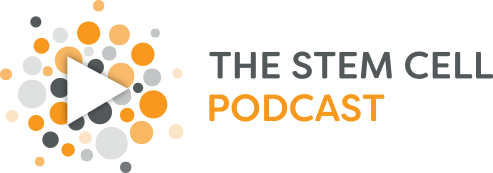
Podcast: Play in new window
Guest:
Dr. Marius Wernig from Stanford University talks about his work with stem cells and his latest paper published in Science Translation on using iPCs to treat a serious skin disorder.
Resources and Links
How Brain Scans Can Diagnose Autism With 97% Accuracy – A much more objective measure—reading a person’s thoughts through an fMRI brain scan—might be able to diagnose autism with close to perfect accuracy.
Mastodons Disappeared from Beringia before Ancient Humans Arrived – According to this article, new radiocarbon dates on American mastodon (Mammut americanum) fossils in Alaska and Yukon (eastern Beringia) suggest this species suffered local extinction tens of millennia before either human colonization.
HIV’s Slower Progression to AIDS Caused by Certain Gene-Protein and ARV – Infected people with a gene that expresses a particular human leukocyte antigens (HLA) protein called HLA-B*57 progress more slowly to AIDS than usual.
Radial Glia Require PDGFD–Pdgfrβ Signaling in Human but Not Mouse Neocortex – Researchers analyze differential gene co-expression relationships between the species, to demonstrate that the growth factor PDGFD is specifically expressed by Radial Glia in human, but not mouse, corticogenesis.
Vegetable Oil Ingredient Key to Destroying Gastric Disease Bacteria – A group of researchers developed LipoLLA, a therapeutic nanoparticle that contains linolenic acid, which is a component in vegetable oils, to dampen H. pylori bacteria and inflammation that lead to ulcers and gastric cancer in mice.
Scientists Uncover Gene Associated with an Aggressive Breast Cancer – Scientists have identified a biomarker, a gene called RASAL2 that is strongly associated with triple negative breast cancer (TNBC), a highly aggressive carcinoma that often has early relapse and metastasis following chemotherapy.
Star Trek-Like Invisible Shield Found Thousands of Miles Above Earth – Scientists have discovered an invisible shield roughly 7,200 miles above earth that blocks so-called “killer electrons,” which can fry satellites and degrade space systems during intense solar storms.
The Missing Gene that ‘Triggers Autism’: DNA Deficiency Linked to Being ‘Unsociable And Disinterested in Others’ – Scientists found mice deficient in a gene called neurexin-II showed similar symptoms to autism in humans, including a lack of sociability or interest in other mice.
‘Lost’ First Languages Leave Permanent Mark on the Brain, New Study Reveals – This article describes the study conducted to challenge the existing understanding that exposure to a language in the first year of a child’s life can be “erased” if he or she is moved to a different linguistic environment.
Cystic Fibrosis Charity Sells Drug Rights to Pharma for $3.3 Billion – The Cystic Fibrosis (CF) Foundation has sold royalty rights to treatments developed with support from its ‘venture philantrophy’ model wherein the foundation provide upfront funding for pharmaceutical companies to help reduce the financial risk of developing drugs to treat CF.
Genetic Testing for Personalized Nutrition Leads to Better Outcomes – Personalized dietary advice based on a person’s genetic makeup improves eating habits compared to current “one-size-fits-all” dietary recommendations.
Mental & Physical Pain May Be Different after All – A new study from the University of Colorado shows that physical and social pains actually use distinct neural circuits which may lead to specific treatment protocols for each pathway.
Proposed Rules Will Vastly Expand Trove of Clinical Trial Data Reported in U.S. Database – This article describes the proposed rule that trial sponsors would need to report summary results for drugs and devices that are never approved—and not just for products that reach the market.
Ontario Announces Funding for Stem Cell Institute – Ontario has announced funding for the creation of an institute for regenerative medicine and three ‘disease challenge teams’ to bridge the widening gap in the province between basic research and clinically tested therapies that improve the health of patients with chronic and degenerative diseases.
The Lab-Grown Penis: Approaching a Medical Milestone – After more than 20 years of research, a team of scientists are bioengineering penises in the lab which may soon be transplanted safely on to patients.
Multi-Kilobase Homozygous Targeted Gene Replacement in Human Induced Pluripotent Stem Cells – This article demonstrates the efficient ‘knock-in’ targeted replacement of multi-kilobase genes in human induced pluripotent stem cells by doing a comprehensive study of targeting vector design parameters for homologous recombination.
Use of Human Embryonic Stem Cells to Model Pediatric Gliomas with H3.3K27M Histone Mutation – Scientists reveal that H3.3K27M expression synergizes with p53 loss and PDGFRA activation in neural progenitor cells derived from human embryonic stem cells, resulting in neoplastic transformation.
Derivation and High Engraftment of Patient-Specific Cardiomyocyte-Sheet Using Induced Pluripotent Stem Cells – Researchers showed that human cardiac induced pluripotent stem cells can be generated from cardiac fibroblasts and subsequently differentiated into exceptionally pure (>92%) sheets of cardiomyocytes.
3D Reconstitution of the Patterned Neural Tube from Embryonic Stem Cells – Investigators described how single mouse embryonic stem cells directly embedded in Matrigel or defined synthetic matrices under neural induction conditions can clonally form neuroepithelial cysts containing a single lumen in 3D.
Precise Correction of the Dystrophin Gene in Duchenne Muscular Dystrophy Patient Induced Pluripotent Stem Cells by TALEN and CRISPR-Cas9 – This article suggests that genetic correction of patient-derived induced pluripotent stem cells by TALENs or CRISPR-Cas9 holds promise for Duchenne Muscular Dystrophy gene therapy but must determine the safety of such nuclease treatment.
Early Depletion of Primordial Germ Cells in Zebrafish Promotes Testis Formation – This article tries to explore the relationship between primordial germ cell number and sexual development in zebrafish.
Human COL7A1-Corrected Induced Pluripotent Stem Cells For the Treatment of Recessive Dystrophic Epidermolysis Bullosa – The ability of induced pluripotent stem cells to edit the genome brings the possibility of providing definitive genetic therapy through corrected autologous tissues for the treatment of debilitating genodermatoses, such as Recessive Dystrophic Epidermolysis Bullosa.
Photo Reference: Courtesy of Dr. Marius Wernig

